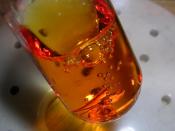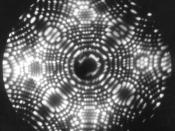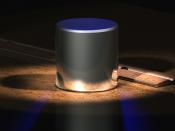Platinum , metallic chemical element; symbol Pt; at. no. 78; at. wt. 195.08; m.p. 1,772ðC; b.p. 3,827ñ100ðC; sp. gr. 21.45 at 20ðC; valence +2 or +4. Pure platinum is a malleable, ductile, lustrous, silver-white metal with a face-centered cubic crystalline structure. Chemically inactive, it is unaffected by common acids but dissolves in aqua regia, forming chloroplatinic acid (H2PtCl6). It is attacked by the hal It does not combine with oxygen even at high temperatures. Like palladium, it absorbs large quantities of hydrogen, which it releases at red heat. Platinum is found in nature alloyed with the other metals of the so-called platinum group, found in group VIII of the periodic table the other five metals in this group are iridium, osmium, palladium, rhodium, and ruthenium. These metals are found in alluvial deposits in the former Soviet Union, South Africa, Colombia, and Alaska. Platinum and the related metals are recovered commercially as a byproduct of the refining of nickel ores mined near Sudbury, Ont.,
Canada; from gold mines in South Africa; and from the alluvial deposits in the former Soviet Union. There is no routine method for separating platinum from other metals; it is usually recovered by complex chemical methods. Platinum has many uses, especially in alloys. Most important of the alloys are those with iridium. Platinum and its alloys are used in surgical tools, laboratory utensils, electrical resistance wires, contact points, and standard masses. (The International Prototype Kilogram, kept at Sèvres, France, is a cylinder of platinum-iridium alloy.) Because its thermal coefficient of expansion is nearly equal to that of glass, platinum is used to make electrodes sealed in glass. It is used extensively in jewelry and in dentistry. A platinum-cobalt alloy is used to make very powerful magnets. Platinum is specially prepared for use as a catalyst...



Doesn't flow together
There seems to be a good amount of research that was put into writing the essay but it doesn't flow together. There needs to be more paragraphs and topic changes.
8 out of 8 people found this comment useful.